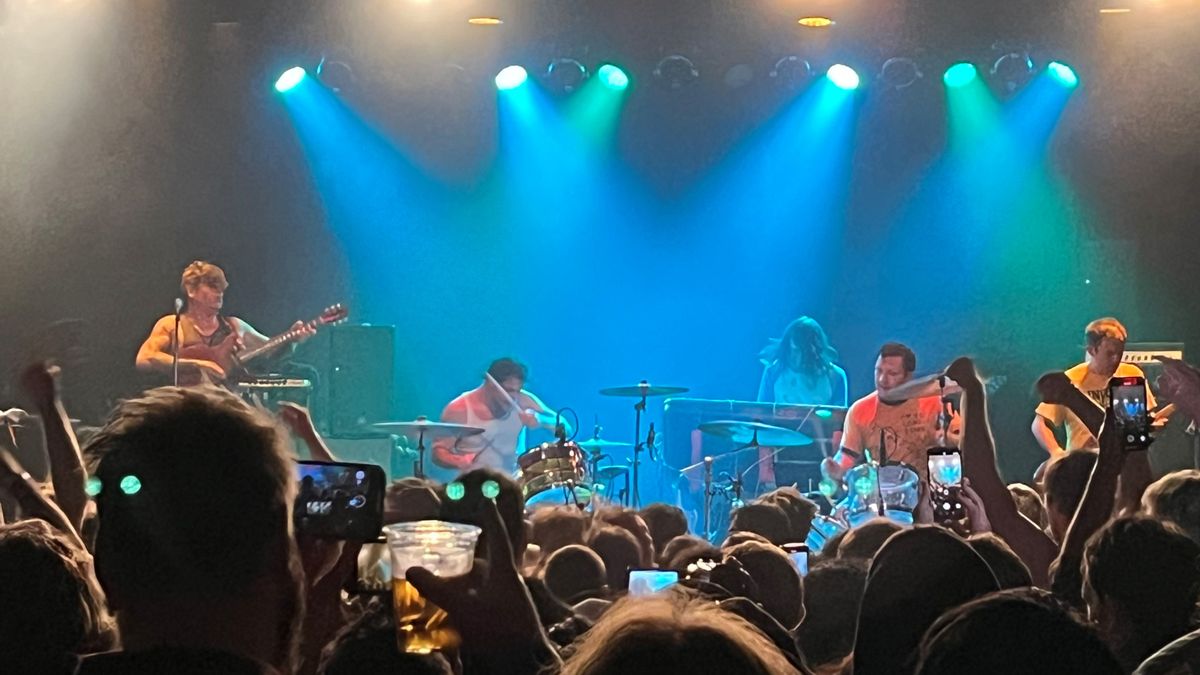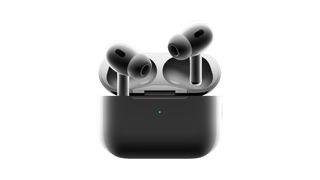A key feature of the new Apple Airpods Pro 2and one that helps put them near the top of our list of best true wireless headphones, is the new Adaptive Transparency mode. For the latest AirPods offering, Apple has supercharged its Transparency feature to protect users’ ears from construction equipment, car horns and other sources of everyday urban noise, which it does by harnessing the capabilities of treatment of the new, billion strong transistorsH2 chip.
During a briefing I had with the company after the AirPods 2 came out, I learned that Adaptive Transparency was also developed with concerts and other performances in mind, and the same feature meant to protect your ears nearby power tools could also save them from the sonic onslaught of live rock n roll.
It sounded like something I had to put to the test.
I had high expectations for adaptive transparency since Apple made its surprise announcement of the AirPods Pro 2 in early September. And while the version that arrived with Apple’s latest headphones is more basic than I expected, it’s still a very welcome feature, not least because of the way it limits loud noises when AirPods 2 are in Transparency mode.
Sound is measured in decibels (dB), with normal noise like background conversation registering around 60 dB. According to the US Centers for Disease Control and Prevention (CDC), when nearby noise is high at the level of 80-85 dB – about what you hear from a lawn mower or leaf blower nearby – prolonged exposure to it may cause hearing loss. Louder sounds, such as an approaching subway (100 dB) or a sporting event or concert (105 – 110 dB), can cause damage when exposed for a short time – as little as 5 minutes.
Going to see live bands is something I’ve done regularly since I was a teenager, and for much of that time I never worried about hearing protection at shows. It wasn’t until I started evaluating audio equipment as part of my profession that I thought I should take preventative measures to stem hearing loss, which I primarily did by using earplugs. foam ear.
But the problem with foam earplugs is that they block too much sound – you’re protected from hearing loss-inducing decibel levels, but you also lose the high and low frequencies that fill out the sound and make it appealing when you listen to music.
I eventually switched to using a set of Hearos High Fidelity earplugs, an inexpensive solution that provides 20dB sound attenuation without significantly altering the sound balance of music. But with their stem-like design, the Hearos earplugs stick out of your ears and look a little weird, and their protection never seemed enough for loud gigs in smaller venues.
AirPods Pro 2! Are you ready 2 ROCK?
Osees are a Los Angeles-based garage rock band that have been churning out inspired, high-decibel sounds since the early 2000s. I first saw them live when they were known as Thee Oh Sees, and l he band’s intense energy, balanced by flights of psychedelic abstraction from Syd Barrett to the level of Pink Floyd, turned me into an instant fan.
Over the years, I have passed up many opportunities to attend performances by Osees, as well as those of many other bands, due to my very real concern to avoid hearing loss. In the meantime, Osees added a second drummer, making their sonic output potentially twice as dangerous.
But after Apple’s briefing where I was told that the AirPods Pro 2 design process involved numerous visits to musical performances to test the effectiveness of Adaptive Transparency, I decided it was time to return to the pit.
Arrived at the living room with the AirPods 2 plugged in, I didn’t score any fashion points, but was willing to suffer this indignity for journalism. Once things got going, I fired up the Decibel X app on my iPhone, which told me that the sound in the lobby was peaking at 114.7dB – diesel truck territory – with an average level 110 dB (someone shouting directly into your ear).
With the AirPods Pro 2 removed, the sound had a raw, appealing ferocity — but it was too a lot. I much preferred the listening experience with the Apple Headphones in my ears, Adaptive Transparency turned on, even though I was the dumbest guy in the room.
With Adaptive Transparency active, all sounds above 85 dB are fully attenuated. When performing, this created a comfortable listening level that still retained bass power and allowed high-pitched details like shimmering cymbals, screeching guitars and shrill crowd whistles to come through. There was an occasional sensation of volume pumping – most likely the effect of adaptive transparency following the rapid and frequent changes in level and dynamics that accompany a musical performance, but it wasn’t so bad that I was going to hear it. switch off, or completely unplug.
Quite the contrary: the next time I attend a show, I will most certainly have a set of AirPods Pro 2 hanging from my ears. And be careful not to laugh at me because, with Adaptive Transparency enabled, I will be able to hear you.



